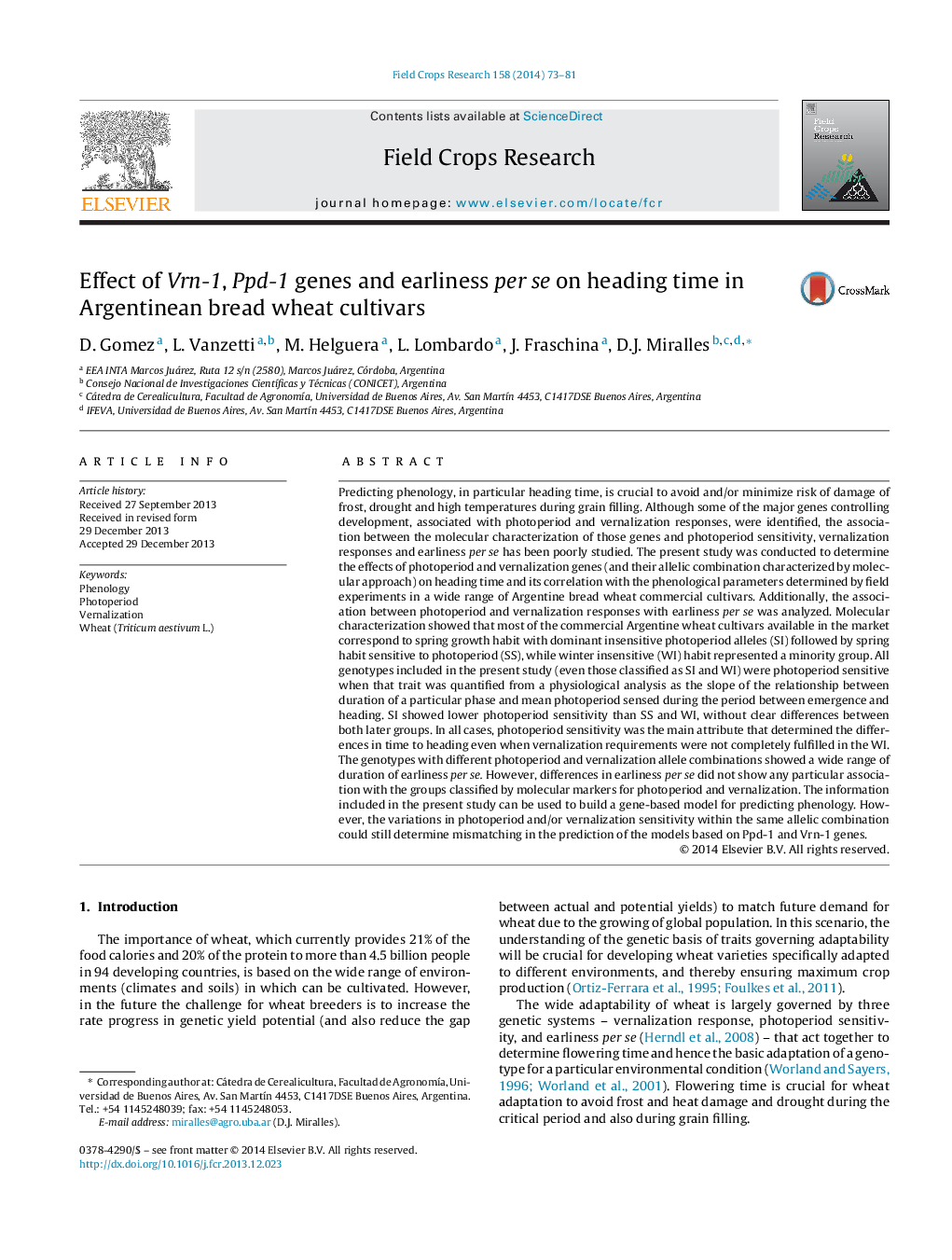| کد مقاله | کد نشریه | سال انتشار | مقاله انگلیسی | نسخه تمام متن |
|---|---|---|---|---|
| 4510142 | 1624705 | 2014 | 9 صفحه PDF | دانلود رایگان |

• Predicting phenology is crucial for crop adaptation.
• The effects of photoperiod and vernalization genes, and the association with their allelic combination, were studied.
• All genotypes even those molecularly classified as SI and WI were photoperiod sensitive.
• Photoperiod sensitivity was the main attribute that determined the differences in time to heading.
• Differences in earliness per se did not show any particular association with the groups classified by molecular markers for photoperiod and vernalization.
Predicting phenology, in particular heading time, is crucial to avoid and/or minimize risk of damage of frost, drought and high temperatures during grain filling. Although some of the major genes controlling development, associated with photoperiod and vernalization responses, were identified, the association between the molecular characterization of those genes and photoperiod sensitivity, vernalization responses and earliness per se has been poorly studied. The present study was conducted to determine the effects of photoperiod and vernalization genes (and their allelic combination characterized by molecular approach) on heading time and its correlation with the phenological parameters determined by field experiments in a wide range of Argentine bread wheat commercial cultivars. Additionally, the association between photoperiod and vernalization responses with earliness per se was analyzed. Molecular characterization showed that most of the commercial Argentine wheat cultivars available in the market correspond to spring growth habit with dominant insensitive photoperiod alleles (SI) followed by spring habit sensitive to photoperiod (SS), while winter insensitive (WI) habit represented a minority group. All genotypes included in the present study (even those classified as SI and WI) were photoperiod sensitive when that trait was quantified from a physiological analysis as the slope of the relationship between duration of a particular phase and mean photoperiod sensed during the period between emergence and heading. SI showed lower photoperiod sensitivity than SS and WI, without clear differences between both later groups. In all cases, photoperiod sensitivity was the main attribute that determined the differences in time to heading even when vernalization requirements were not completely fulfilled in the WI. The genotypes with different photoperiod and vernalization allele combinations showed a wide range of duration of earliness per se. However, differences in earliness per se did not show any particular association with the groups classified by molecular markers for photoperiod and vernalization. The information included in the present study can be used to build a gene-based model for predicting phenology. However, the variations in photoperiod and/or vernalization sensitivity within the same allelic combination could still determine mismatching in the prediction of the models based on Ppd-1 and Vrn-1 genes.
Journal: Field Crops Research - Volume 158, 1 March 2014, Pages 73–81